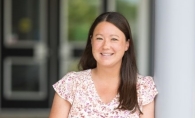
While many schools place a heavy emphasis on acquiring and teaching with the latest technology, Liberty Classical Academy, a private, multidenominational Christian PreK-12 school, prioritizes the age-old learning tools of touch and human interaction.
“Technology sometimes hinders learning, taking the focus off the material and placing it on the manipulation of technology,” Nghi Anderson, Liberty’s director of admissions explains. “The emphasis is taken away from personal instruction and human interaction—and replaced with pushing buttons and swiping screens. There’s much research that supports the idea that students learn best outside the confines of a screen—whether it’s working out a math problem on paper, writing out a rough draft in cursive, or building and testing a model through trial and error. These things are outside what screen-learning can provide.”
Andrew Hofstetter, father of two Liberty students and blogger for the school uses the metaphor of a “digital playground” to explain why technology isn’t a substitute for real-time, real-world experiences. Says Hofstetter, “They can still play war. They can still build forts. They can laugh and create and build. They can discover new things and play make-believe.”
The digital playground, Hofstetter says, allows kids to wander—sometimes to dangerous places. And instead of coming back with scraped knees from building forts and jumping off slides, this new playground brings limitless information, he says, but can also allow kids to cut corners or breeze past boundaries that would be clear in real life.
Hofstetter believes that overuse of technology has steep costs. “The playground my children are being invited to can scrape their souls,” he says. “It can easily remove their God-given desire for love to give them a cheap and dangerous substitute. It can quickly replace good thinking with quick fixes and inspiration with something that is ‘good-enough.’”
Liberty intentionally includes real-time, tactile experiences for its students. Cursive is taught from second through eighth grade, and assignments are done by hand, on paper for grades K-8. Computers are used for research, PowerPoint presentations and for typing final drafts, but iterations are done manually, with feedback from teachers and peers, face-to-face or written on paper, explains Anderson.
Anderson explains, “Liberty teaches students how to think, not what to think. Our students learn how to ask deep questions, think critically, analyze and synthesize information, and consider an issue from various viewpoints, not just their own.” This thoughtful philosophy of learning—firmly grounded in Latin, logic and rhetoric, virtue and the arts—flies in the face of Googling answers and perusing YouTube for the thoughts of others. And it practically begs for a lingering, in-person conversation about literature instead of careless tweets lobbed back and forth between bare-acquaintances.
Though the school is Christian, multiple viewpoints are shared, and students learn to wrestle with opposing views in order to arrive at the truth—and that looks different depending on how students are wired. “We are teaching with the grain of a child, utilizing teaching methods that align with how he or she learns best. Compared to a more modern approach, classical education is sequential, interrelated, intentional and comprehensive,” Anderson says.
The result? Liberty students score high on national standardized tests, though that’s never a goal. “The real evidence is in our students,” Anderson says. “We often hear that our students are more thoughtful, articulate and respectful, and I believe a low-technology environment plays a key role in this.”









